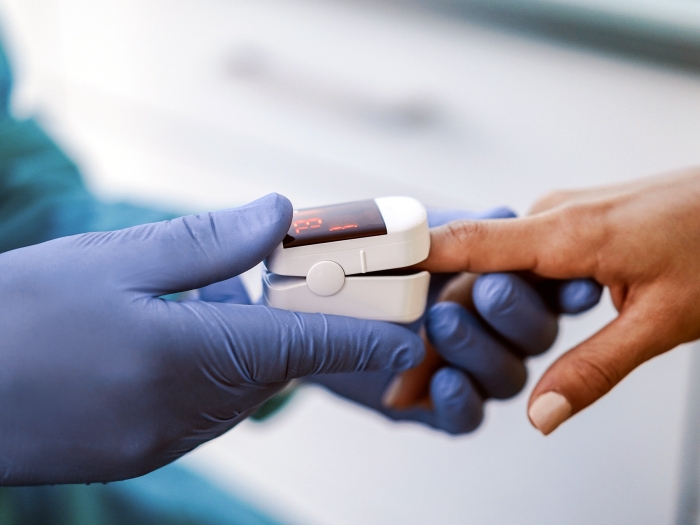A new review summarizes practices that lessen time on a ventilator and reduce deaths.
5:00 AM
Author |

It's a decision being made thousands of times over inside hospitals all around the country: is it time to place a patient struggling to breathe on a ventilator? For all of the attention ventilators have received during the COVID-19 pandemic, deciding when to place patients on them—and when to take them off—is complex. Michigan Medicine researchers have been investigating best practices for mechanical ventilation for years, never knowing how applicable their work would become.
LISTEN UP: Add the new Michigan Medicine News Break to your Alexa-enabled device, or subscribe to our daily updates on iTunes, Google Play and Stitcher.
In a new paper in the journal CHEST, lead author and clinical lecturer Jennifer Ervin, Ph.D., MSc of the division of pulmonary and critical care medicine at Michigan Medicine and her team outline 20 evidence-based practices shown to reduce time spent on a ventilator and death in patients with acute respiratory failure and acute respiratory distress—conditions that have many overlaps with severe COVID-19. "Hopefully, this work will inform clinical decision-making in these complex care settings," says Ervin.
The trigger points for ventilation, she explains are "junk in the lungs" or congestion visible on an X-ray and the inability to maintain normal oxygen levels in the blood. "Ventilation gives the body and lungs time to heal," she says.
Optimizing how long a patient is on a ventilator can help prevent negative outcomes both immediately and later on, Ervin says. And putting someone on a ventilator and then monitoring them is a team sport, she says. "You have attending physicians working with registered nurses, respiratory therapists, pharmacists, and trainees."
MORE FROM THE LAB: Subscribe to our weekly newsletter
Mechanical ventilated patients typically must be sedated and/or paralyzed so that the machine can do the work of breathing. But over-sedation can lead to a host of problems, including delirium and later on, post intensive care syndrome, which has many of the same features as being reported by those with "long COVID."
Best practices that have emerged include prone position, or placing a ventilated patient on their stomach, to give the lungs more room to inflate—a practice that should be done early, says Ervin. Lung protective ventilation, which involves avoiding over-inflating the lungs, has also been shown to improve outcomes. However, "anywhere from 30-60% of patients are potentially having their lungs over-inflated," she says.
Furthermore, several practices revolve around frequently checking to see whether it is time to take a patient off the ventilator, including turning down sedation to check for delirium and doing breathing exercises to see how well a person is doing without the machine's help.
The team's next step has been to prioritize the 20 best practices they've identified, acknowledging that it's near impossible for healthcare providers to do them all, especially during the stress of a pandemic. "None of these happen in a vacuum. It's a continuum of care and a lot of practices are contingent on one another," says Ervin. "We are trying to give the tools…here's everything in one place. This is just one step, though."
Like Podcasts? Add the Michigan Medicine News Break on iTunes or anywhere you listen to podcasts.
Critical care at Michigan Medicine is a well-oiled machine because everyone understands what their role is, she says. She notes that in a time of crisis you have to do the best you can, but doing even three or four of these evidence-based practices is better than none. "This is a very important resource for clinicians who may not be familiar with how to optimize mechanical ventilation, as well as for future trainees."
Paper cited: "Evidence-Based Practices for Acute Respiratory Failure and Acute Respiratory Distress Syndrome: A Systematic Review of Reviews," CHEST. DOI: 10.1016/j.chest.2020.06.080

Explore a variety of health care news & stories by visiting the Health Lab home page for more articles.

Department of Communication at Michigan Medicine
Want top health & research news weekly? Sign up for Health Lab’s newsletters today!





